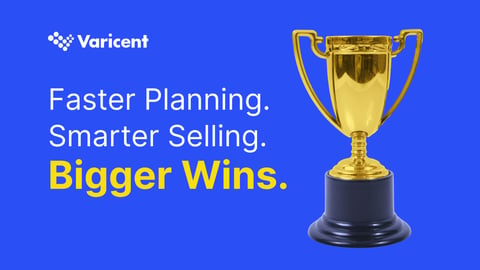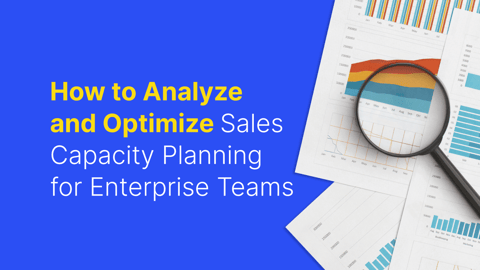This is part of a series of interviews with B2B revenue leaders. This interview is with Sylvia Kainz, Director of Global Connectivity Partnerships at Airbnb.

Welcome Sylvia, thanks a lot for joining me today, let’s start with an introduction – just your name, a bit about your experience, and what you’re up to now …
My name is Sylvia Kainz and I’ve been working in Revenue Operations since 2013 when I started working at a SaaS company called InsideView. That’s where I learned what operations was and how impactful it can be to a growing business – it got me hooked.
RevOps to me is the strategic thinking focused on alignment around the same set of goals. In my opinion, it should be very simple – so that everyone from the C-level to a new junior hire joining the team can understand it.
What are the biggest benefits that companies can expect to see by changing to a Revenue Operations model?
Alignment is the biggest – between Sales, Marketing, and Customer Success.
I look at RevOps as ‘neutral’ Switzerland – and maybe that’s because I'm from Switzerland – but at times there is conflict or misalignment between marketing, sales, and customer success. That’s to be expected. The go-to-market teams are operating in a high growth environment where the number one priority is to continue growing, but with different goals in mind for each team.
When companies start growing and get to a “hyper-growth” mode, there will be a point when the teams recognize the misalignment and say, "We can’t continue to grow at this rate if we’re not aligned operationally." That’s when a lot of organizations start building a centralized function such as a RevOps team.
It’s not a small change, so the topic I wanted to cover with you today is around the organizational requirements needed for a high functioning RevOps team. From speaking with you earlier, I’ve heard you say the term “phased approach”.
What does a “phased approach” look like in practice and when would it make sense for a company to take it?
That's a good question that I’ve thought about a lot. For growing companies that want to invest in a RevOps philosophy, there are three phases you should go through:
Phase One: Full Funnel Ownership
Phase Two: Alignment
Phase Three: Analytics
Phase One: Full Funnel Ownership
The first step of a phased approach is bringing together the operational teams that support the revenue engine: This is usually initiated by a Chief Revenue Officer (CRO). The CRO recognizes the benefits of aligned teams, processes and ultimately a 360 view on customers.
It begins with sales and marketing alignment around the buyer experience (full funnel view from awareness to leads to opportunities). The CRO wants full visibility into the pipeline and understanding around early warning signs and end of month/quarter performance. That's the starting point of a Revenue Ops team.
When you merge different operational teams into a RevOps team, some great synergies start happen: transparency, accountability and focus across all Go-To-Market Teams. Suddenly, everybody acts and works together with the same focus and goal.
Phase Two: Alignment
The next phase is aligning your RevOps engine (the resources you’ve brought together in phase one) around the buyer experience by leveraging customer data.
Customer data (the 360 view on customer data) is the ultimate competitive advantage for SaaS companies as it drives better decision making across the Go-To-Market Teams: Visibility into that data is crucial for providing a great customer lifecycle experience as every touchpoint with the customer impacts their experience and ultimately whether a company can land and expand its products and services with each customer.
Data is the key ingredient and driver of success for a RevOps team: Every RevOps team needs a strong focus on the Tech Stack an work closely with product and other systems across the company to bring the right data to the Go-To-Market teams. Systems and processes need to be reconfigured to allow for data flow optimization. This is how data can turn into a competitive advantage. That’s a tremendous responsibility for a RevOps team and elevates the team from a support team to a strategic partner within the company.
Phase Three: Analytics
The next phase is all about insights that can now be generated from the visibility into the Full Funnel: Suddenly, Go-To-Market teams can be proactive and add value in their customer conversation with insights and recommendations. Operationally, a analytics team can also help with red flags, bottlenecks or early warning indicators in the funnel and become the trusted partner for Go-To-Market teams globally.
The most successful RevOps teams also drive continuous improvements across their stakeholders: It’s now about looking at an end-to-end process and measure what happens at every stage to identify where gaps exist.
At the end of the day, what’s the goal of RevOps? Enabling the Revenue teams (acquisition and retention teams) to:
-
Close more deals
-
Close deals faster
-
Close higher value deals
RevOps' focus is the full pipeline and bringing transparency and focus to the around acquisition and retention performance. This is the starting point. Aligning systems and process to the customer journey will then allow for optimization of the lifecycle experience. Lastly, being the strategic partner across the company by asking: "What can we do better to drive a better customer experience and become a high performing organization?" That’s where the analytics team can uncover many drivers of operational scalability and top-line growth.
What is the biggest challenge businesses can expect to run into when making the move to RevOps?
The biggest challenge is change management: A lot of internal communication, buy-in and education are critical for the success as customer centricity has not been a focus explicitly. If customer centricity is taken seriously, a RevOps team is just the starting point to align other teams across the organization around this. Customer centricity needs to be woven into the culture, the org charts and all operational processes.
Change management is critical because it's the foundation that everything is built on. If you don't initiate it from the top of an organization (could be the CRO driving it or even the CEO), you're not going to have the teams on board and they don't understand why change is required and how they can contribute to the success.
Another big challenge will be the data infrastructure. Companies sit on ton of data. but it is very difficult to ask the right strategic and operational questions to turn data into a competitive advantage. With RevOps, a big challenge to overcome is how to look at the data and craft a better customer experience. Data also is critical to enable the go-to-market teams to be well informed about their buyers and customers: A 360 view on customers will be a competitive advantage. For RevOps, this is the gold standard.
Before we wrap up, I’d love to hear some of your favorite resources in the RevOps space that you’d recommend to anyone reading …
RevOps is such an emerging topic right now. Great discussions happen in Operations meet-ups, blog posts and some companies which are at the ‘bleeding edge’ of RevOps:
I’ll start with Varicent Lift's Revenue Intelligence. I mean, it's amazing what you folks put out with The RevOps Framework. You've really become the leader in the RevOps space with it – so that’s a go-to resource.
SiriusDecisions has just published a huge research project around it that I’m really impressed with.
Radius is another company that does some good articles around revenue operations, as well as sales and marketing alignment.
Thanks a lot for this, Sylvia!




